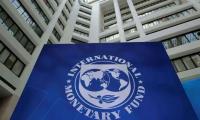Balochistan has traditionally stood next to the former Federally Administered Tribal Areas (Fata) across all human development indices (HDI) and rankings.
According to the Pakistan National Human Development Report of 2017, Balochistan stands lowest amongst all provinces with an HDI score of 0.421. Of all regions and territories, only Fata had a lower HDI standing: 0.216.
Things are expected to improve for the historically neglected tribespeople of Fata, however. The 25th Amendment in the constitution in 2018 has sanctioned merger of the tribal districts into the mainland Khyber Pakhtunkhwa province. With a smoother province-centre relationship enjoyed by Peshawar and multiple structural reforms paddled by donor agencies, the Newly Merged Districts (NMDs) are anticipated to be at par with the rest of KP and Pakistan in the coming years. If these NMDs graduate out of poverty, Balochistan will literally see off every member of the federation to suffer alone from poverty and illiteracy.
A recent study by Dr Nasir Iqbal, an economist at the Pakistan Institute of Development Economics (PIDE), should be enough to give Pakistani federalists nightmares. The study uses government data from the Pakistan Bureau of Statistics (PBS) to see how each federating unit has fared between 1998-99 and 2018-19.
Khyber Pakhtunkhwa is the ultimate success story; the province improved from 71 percent of its population below the poverty line in 1998-99 to only 18 percent of its populace below the poverty line in 2015-16. With the merger of the ultra-poor districts of former Fata, the poverty figures for KP would overall rise to 27 percent in 2018-19.
While the country has overall improved in terms of poverty indicators, the caravan seems to leave Balochistan behind. Best of all the provinces in 1998-99 with a 55 percent poverty ratio, Balochistan remains by far the poorest province with 40.7 percent of its populace still below the poverty line in 2018-19. The situation is even worse in rural Balochistan. What can literally kill any hope is that these figures are pre-Covid-19 and even the most optimistic simulations estimate an increase of several percentage points in the poverty ratio across rural and urban Balochistan.
What has gone so wrong specifically for Balochistan? The answer is: too many things. It suffered the most under the eight years of General Musharraf’s dictatorship, starting with dissolution of the Mengal government and ending with the assassination of Nawab Bugti. The province was already suffering from the spillover effect of extremism and violence in neighbouring Afghanistan. Those have dealt huge blows to the pre-existing low level of Baloch trust in state institutions. It should not escape our collective memory that not long ago this province’s Hazara community suffered violence of genocidal scales at the hands of sectarian militant groups. While the rest of Pakistan has seen some form of democratic consolidation, Balochistan’s is a case of settlements with ridiculous power-sharing formulae seeing Dr Malik sharing the term with Sardar Sanaullah Zehri between 2013 and 2018.
When the macro numbers are depressing, it’s time one should step out and meet people who are striving for change at the grassroots level. A recent visit to village Gwarikh in UC Abey Noghay, district Khuzdar where a schoolteacher is organising his community to fight rising poverty and build climate-resilient communities, gave me that change of canvas.
Through years of consistent efforts, Sanaullah from Gwarikh, district Khuzdar has earned the trust and respect of his community members and reached out to 17 villages and some 50 neighbourhoods across UC Abey Noghay. Serving as a bridge between his community and development interventions by the European Union, he has been able to earn income generating grants for 57 poorest of the poor households in his union council. The local support organization he leads is reaching out to multiple government and non-government donors to seek solutions in fighting climate change impacts such as declining underground water tables, locust attack, and the Covid-19 pandemic to name a few.
Through the ongoing development initiative by the European Union, this local organization is running an adult literacy centre and has been able to enroll 13 community members into vocational training programmes. This organization is serving like a mini-bank in this Balochistan village and is currently revolving interest-free loans amongst some 139 community members. Above all the economic efforts, active participation of local rural women in these initiatives is what gives us hope.
UN agencies, the European Union (EU), the German Cooperation (GIZ) and other actors seem to realise the scale of challenge that Balochistan faces. It is very unfortunate that the very government of Balochistan has not delivered on its commitment to enact local government via election. The state can only earn back public trust of the Baloch rural poor communities through improved public services at the grassroots level. In the absence of an ‘elected local government’, it is a highly non-participatory ‘local administration’ that is striving to fill the political vacuum. It is not a match, and I am afraid communities like Sana Ullah’s in Khuzdar do not have much time to stabilise against poverty before the deteriorating situation in Afghanistan undoes the hard work in Balochistan. Balochistan is not missing the boat. It is drowning.
The writer is a Rotary Peace Fellow and a development professional from Balochistan. His research and activism revolves around human rights in the Pakistan-Afghanistan region. He tweets @Changovski
Shahzaib Rind, Pakistan's martial arts fighter from Quetta. — Facebook/shahzaibrindhofficialShahzaib Rind has become...
This screengrab taken on March 5, 2024, from Pakistan Expo 2020’s YouTube video posted on October 5, 2021, shows...
Country witnessed 432 violence-linked fatalities and 370 injuries among civilians, security personnel, and outlaws
During Raisi’s visit, Iran and Pakistan signed a total of eight accords on varying subjects to enhance cooperation...
Every year, millions of girls silently say goodbye to their education and the promise of a better career and get married
Ruling party emerged victorious in by-elections and as per unofficial results has won at least two out of five NA...







